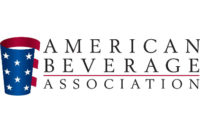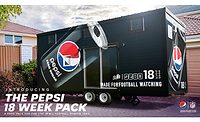![]()
Tiny tastes mean big profits
Research shows that kids are increasingly aware of
what’s good for them when they reach for beverages on the store
shelf. And while marketers work to attract the parental gatekeeper when
targeting a toddler audience, holding the attention of older children
requires interactive and fun packaging. Marketing products to varying age
groups might seem like a daunting challenge, but companies effectively
reaching children of all ages are reaping the benefits of communicating to
these consumers.
“Half of all kids say there aren’t enough drinks
that are fun and good for you,” says Rachel Geller, chief strategic officer
at The Geppetto Group, an advertising and marketing agency dedicated to children
that recently released the “Health Through a Kid’s Eyes” study.
“And more than 80 percent say that if it’s made with real fruit
juice, it enhances taste perception. There’s a big opportunity for beverage
manufacturers.”
Despite the recent controversy over sugar content in beverages,
Geller says marketers have been working hard to deal with the issue by creating
flavored waters and flavored water with juice. However, there is limited awareness
of these better-for-you products in the beverage category, she says.
“The way we approach marketing to kids, more
than any consumer, [is satisfying their urge to] want to know what’s
in a product and [showing the emotional benefit],” Geller says.
“The first thing we do in product development is taste profiling that
meets taste expectations and packaging for kids. Sometimes they want to
gulp down a beverage, but they can’t do that with a carbonated
beverage. We also see that the labels that have worked for adults cannot
work for kids.”
Research shows healthy products with the right message
attract kids, but flavors and packaging are part of creating the right
product that will work for each age group.
Age defines preference
“Toddlers respond to sweet taste and colorful products and colorful graphics,” says Bruce Langer, co-vice president of Langer Juice Co. Inc., City of Industry, Calif. “For the infant stage, we don’t offer artificially sweetened beverages or calcium-enhanced beverages because of federal regulations restricting that. When you get to toddlers and tweens, we do offer beverages with calcium.”
Category |
No. of
Reports |
No. of
SKUs |
| Bottled Waters | 4 |
9 |
| Soft Drinks | 3 |
15 |
| Isotonic, Energy Producing Beverages | 3 |
7 |
| Health Drinks | 1 |
2 |
| Fruit & Fruit Flavored Drinks | 47 |
146 |
| Baby Beverages | 1 |
2 |
| Milk, Non-Dairy Milk & Yogurt Drinks | 16 |
45 |
| Tea | 3 |
4 |
| Beverage Mixes & Flavorings | 8 |
20 |
| Miscellaneous Beverages | 1 |
1 |
| Grand Totals: | 87 |
251 |
Source: Productscan Online (www.productscan.com). Product introductions from Dec. 15, 2002 to Dec. 15, 2003.
In addition to formulation, flavors also serve as a
key differentiation between the products younger and older kids will
prefer, according to Langer. Infants and toddlers like single flavors,
while tweens go for tropical and complex flavors.
Kid power: The beverage buying basics
|
| There are 36 million 5- to
13-year-old kids in the United States. (U.S. Census, 2003)
Spending power
There are 41 million individuals between the ages of
5 and 14 years old who live in the United States, spending more than
$100 billion across all categories, with about $10 billion on food and
beverages alone. (U.S. Census, 2002)
What they want
Most tweens name a beverage as the top new product they’ve
tried lately. (Strottman, Tween Power Conference, Nov. 2002)
Influence at home
From the age of about 18 months, children can recognize
brands. (The Kids Market: Myths and Realities, James McNeal, Ph.D.)
A total of 84 percent of 8- to 12-year-old children
say they decide or influence grocery purchases for their family. (Harris
Interactive YouthPulse, Summer 2003)
A total of 87 percent of kids between the ages of 5
and 14 years old influence total grocery purchases. (Packaged Facts,
2003)
Influence in store
Fifty-five percent of kids say they eventually persuade
parents to buy the products they want. (Center for the New American
Dream)
|
Successfully developing products that kids want also
means making a product that moms want. For its TummyTickler line, which is
marketed toward children 2 to 6 years old, In Zone focuses on benefits that will appeal to the gatekeeper. In addition to the 100-percent juice product, TummyTickler collectable bottles are reusable, dishwasher safe and have similar leak-proof and spill-proof features as a sippy cup.
marketed toward children 2 to 6 years old, In Zone focuses on benefits that will appeal to the gatekeeper. In addition to the 100-percent juice product, TummyTickler collectable bottles are reusable, dishwasher safe and have similar leak-proof and spill-proof features as a sippy cup.
Peter Lewis, kids line product manager for Stonyfield Farm,
says kids primarily look for three things in a product: taste, coolness and
likelihood a parent will buy it for them. “Kids are much more aware of
packaging than we think they are. Kids today are much more savvy consumers than
when I was their age,” says Lewis.
Building brand loyalty
In addition to imitating parental fickleness to try
new things, kids have even shorter attention spans. Some companies
effectively reach kids by licensing movie or cartoon characters to create
interactive bottles in rapid succession or do video game software tie-ins.
“Licensing was the access road to building a brand with
our consumers,” says VerEecke. “It was an effective way to establish
a bond with our consumers without taking the time and advertising dollars.”
Stonyfield promotes kids products without using cartoons on
its packaging. Its recent on-pack offer included a Frisbee that changed color
when exposed to sunlight.
While experts agree that toddlers require different marketing tactics than
older kids, companies continue to develop unique strategies to reach all age
groups and find new opportunities in a growing market.




